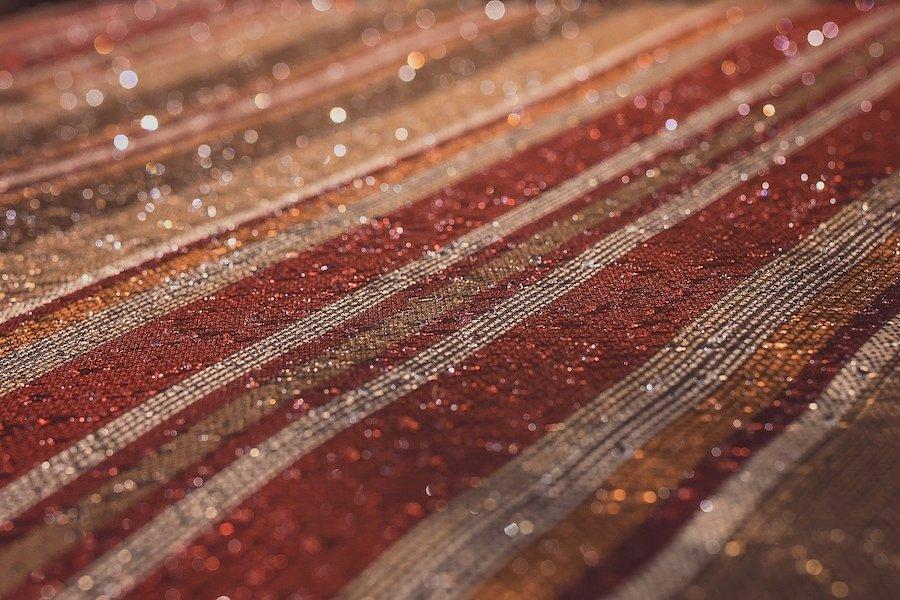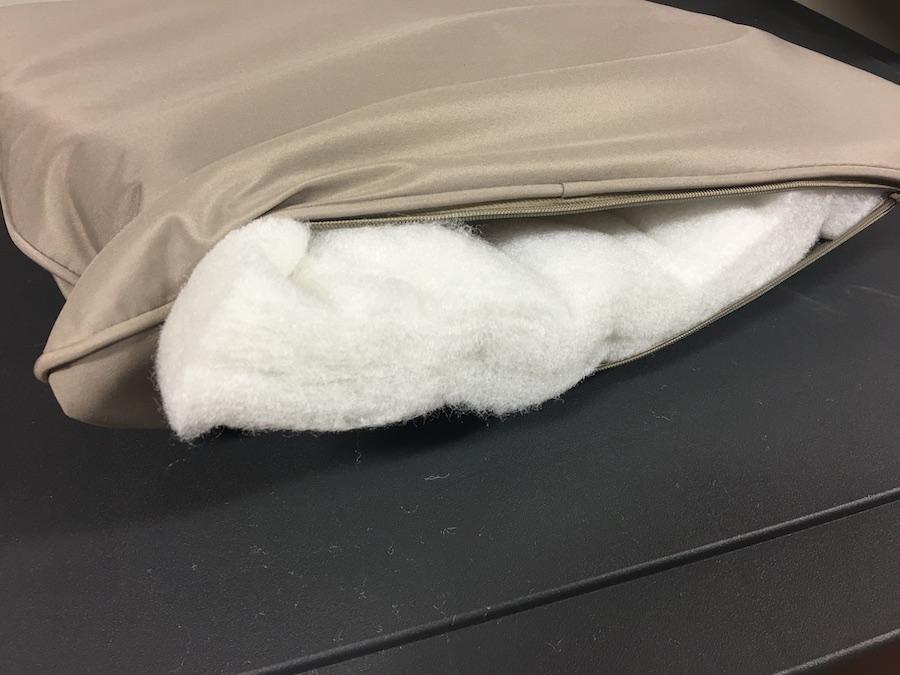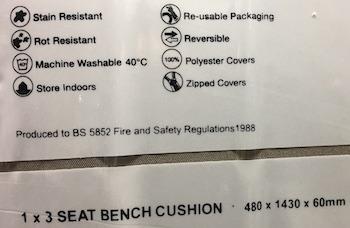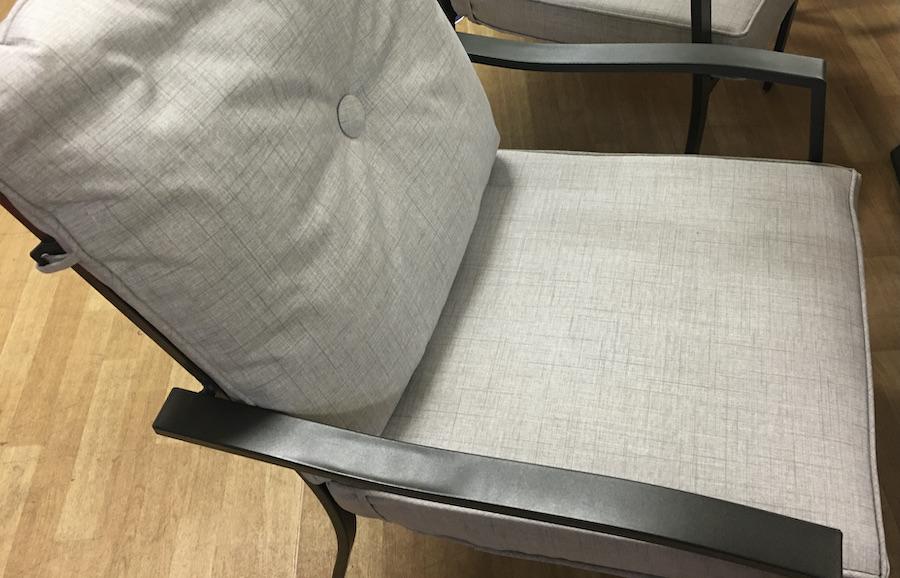We’ve all seen the rain coming down on our outdoor furniture, and wondered if we should rescue the cushions to avoid them becoming ruined. The question is, can outdoor cushions get wet? Or should we race out in the rain to save them from doom!
I’ve had this happen so many times over the years, but knowing how foam works puts my mind at rest. So I’m going to go over when and why most outdoor cushions can get wet, starting with a brief summary.
Outdoor cushions that are likely to get wet should contain a filling that is either porous so that water passes through or closed-cell that does not enable penetration by water. It should also contain anti-microbial properties and anti-fungal protection.
Outdoor furniture has come a long way. In the past, you might have seen shiny, rubbery plastics posing as furniture, chairs that resembled kid’s room toys.
You can still get them, and in the right setting, they can still work great. But thankfully, modern materials and fabrics have enabled us to move on in style.
Outdoor cushions today come in a variety of fabrics that are reliable, as well as comfortable.
And the plus point is that outdoor cushions can also be used indoors.
However, cushions are still in the process to successfully make the transition and it can be difficult to understand how to care for these small but all-important items of comfort.
If you’re looking to make your own bench cushions, then also see my guide on the best foam for bench cushions.
So can outdoor cushions get wet?
Yes, naturally they can get wet if they’re not normally under any type of cover. They can also get wet from morning dew. But obviously, the question is more aimed at should you allow them to get wet. Well, here are some must-know things about outdoor cushions…

Before purchasing outdoor cushions
If you’re just getting started and have taken inspiration from magazines, websites, and the occasional YouTube influencer for outdoor cushions, or deciding to make them yourself, there are a few things to consider before you get too attached to a particular style.
Firstly, certain pieces work better for each individual and each situation…
Maybe you like the look of a certain fabric or cushion, but you’re just too busy to clean it regularly. Or you don’t realize it’s not designed for outdoor use.
Maybe you like the idea of sleeping the summer away on an outdoor lounger, but you’re more of a sit-up-and-snack kind of relaxer. There’s an ideal cushion filling and cushion cover for every scenario you have in mind.
Buying factors
First, we should think about your climate.
What is the weather like in your home city? Can you protect your cushions from sudden rain? Can you put in extra effort to prevent water damage or fading in the sun?
Where will you set up the cushions? Is there a spot under your maple tree where you can set up your outdoor seating area?
When shopping for an outdoor cushion keep this information in mind. If your furniture isn’t cleaned regularly, fallen leaves, sap, and debris from trees will leave stains and traces, however, some shelter will allow you to be more lenient with cushion cleaning.
When it comes to cleaning, how much are you able to do it? Are you willing to devote some time to maintain and clean your outdoor cushions? If you don’t want to spend even a minute cleaning or maintaining your furniture a cushion-free set like a mesh lounger might be the best option. Or simply get a set of patio set covers – there are lots available on amazon.
There are also specialist Sunbrella fabrics like this. That would take care of the robustness of the fabric required.
But as regards the filling, you should ensure that it’s water-resistant, or water repellent. Unless you want to spend time drying them or treating them with anti-fungal products.
Choosing seat cushions that can get wet
There are a few types of fillings that are more likely to stand up to getting wet than others
If you’re looking for something that is more effective than just polyester filling. Then choose foam filling that is Dry fast foam or another option would be closed-cell foam that is also suited for outdoor furniture.
For outdoor seating, Dry fast foam is porous and will allow water to flow straight through, which speeds up the drying process. Coupled with antimicrobial properties. Closed-cell foam provides a surface barrier that will not allow water to penetrate. Another option is Dacron.
Leaving cushions out in the rain
Whether your outdoor cushions are waterproof or not, rain collecting on them may ultimately damage them as dirt and residue build-up and erode the surface. After it rains, wipe down cushions and unzip or open where possible to help speed up the drying time.
Many waterproof fabrics eventually have a hard time battling the elements. The rain will likely dry, but it’s the residue left behind that may cause issues. Couple this with debris such as leaves, dirt, sap, and bird droppings means you should not expect your cushions to last without proper care.
Fillings for outdoor cushion
Here are your main options when purchasing your outdoor seat cushions, or if you’re considering making your own.
Polyester Fill
Polyester fill is very cheap, and starts life being reasonably soft and thick, but is far from ideal. Over time, they flatten out and are only really aesthetically pleasing for a short period of time.
Polyester is similar to Dacron filling which we’ll talk about later. So be sure to check the label.

Clustered Polyfill
Polyfill is wrapped in small bundles or formed into small balls. These cushions are slightly firmer as a result of this, but they are still prone to flattening or going lumpy.
Foam
Since foam comes in different types and densities, it can be difficult to tell how supportive a foam cushion is.
Density is a determining factor for foam grading. So ideally you need to research this thoroughly if you’re looking to get foam cushions.
As I mentioned previously, Dry Fast foam is an ideal option for this.
Dacron
Also known as “batting”, Dacron – PET (Polyethylene Terephthalate) Dacron is a proprietary fiberfill process. It’s a thermoplastic synthetic polymer resin that was initially used in the production of luxury beds and upholstery to smooth out edges and corners.
It’s robust padding that offers maximum support. Dacron cushions are of reasonable firmness and less likely to flatten than other materials.
In order to soften them, these cushions are often covered in a thin layer of polyester. Similar to a pillow-topped mattress.
Unlike other more natural fibers, Dacron is hypoallergenic, non-absorbent, and also mildew-resistant. This product is a viable option, and rolls of Dacron are well priced on Amazon.
Outdoor cushions covers that can get wet
As well as having porous or sealed (closed cell) foam inserts in your cushions, the covers are also important when it comes to outdoor cushions.
While they can appear to be the same, if the cover is not the right material, and isn’t waterproof and sealed sufficiently around the edges then it will likely let water in.
This can lead to mold and provide a breeding place for insects. And after one or two summer seasons, they can also fade and lose color.

Features for outdoor cushions
Ideally, you need to be looking for certain qualities and features in your outdoor cushions and covers:
- Stain resistant
- Rot resistant
- Polyester covers
- Reversible
- Machine Washable
So look for a label similar to the one I’ve added here…
Types of covers for outdoor cushions
Here are your main options for outdoor cushion covers to use as protective covers for your outdoor foam. Some are better than others as you will see.
PVC (polyvinyl chloride)
Also known as vinyl is a plastic material that is most likely the cheapest choice. They are certainly waterproof, and are durable – except any tears or splits can and will get worse.
In the summer, however, a vinyl fabric may not hold up well. When sitting in the sun, they can get incredibly hot and can even give you a burn when you try to get comfy.
Cotton canvas
This is another option. It’s a cloth that has been around since the 13th century. Cotton fabric is inexpensive and dyeable. Since cotton canvas fabric is not water-resistant, mold and mildew can be a concern.
Textilene
Textilene is a woven mesh made of polyester yarns coated with PVC. They can get hot in the sun but the yarn does offer some protection. The mesh comes in an open or close-knit style.
While Textilene cushions are often waterproof, they are known to fade and lose color when exposed to extended and direct sunlight.
You can probably categorize Textiline into two main types, a thinner breathable mesh often found on patio table chairs, and a thicker, waterproof, and softer tight woven mesh often found on cushions.
Sunbrella Fabric
As I mentioned earlier, Sunbrella is a good option. It’s a proprietary acrylic fabric that is solution-dyed. This indicates that the cover is colored in its entirety.
Although a little higher in cost than the other cushions covers, Sunbrella is the best choice because it’s fade-resistant, waterproof, mold and mildew resistant, and chlorine protected.

Cleaning Instructions for outdoor cushions
Sometimes the mess and dirt cushions receive are inevitable, no matter how careful everyone is. Here’s how to take care of your outdoor cushions.
Regardless of which fabric or filling you use, clean your seats on a regular basis. I’m not suggesting that you scrub your outdoor cushions thoroughly every weekend, but a little routine maintenance won’t hurt.
It’s no fun to sit on dusty leaves, dried dirt, or some other gift from Mother Nature, so I suggest sweeping your outdoor cushions with a soft bristle brush regularly.
This reduces the possibility of dirt or dust being trapped in the cloth and reduces the chances of a pest infestation.
Spills and stains should be cleaned up as soon as possible. You might enjoy snacking while relaxing. If you accidentally stain your cushion, absorb as much of the stain by using an absorbent fabric or paper towel.
Then, in a bowl of water, dissolve a small amount of dish soap and dip a soft cloth into it. Gently dab to work the soapy mixture into the stain, and then allow it to fully air dry.
Machine washing your outdoor cushions might be a good option – depending on the fabric, Many outdoor cushion covers are removable and machine washable.
Just make sure to read the cleaning instructions for your particular piece to avoid damaging the fabric in your washing machine.
Use a mild detergent and hang the covers to dry. If stains don’t go away then consider replacing them.
Accidents happen, no matter how hard you try to be careful. Some stains are just too stubborn to leave you alone. If you wish to give your outdoor cushions another chance, you can find new covers for them.
To finish
I hope this has provided some good insight into outdoor cushion fillings and fabrics to stand the test of time. For foam, don’t forget to check the types of foam you can consider. Good luck with your cushion purchase or in buying your ideal cushions.
